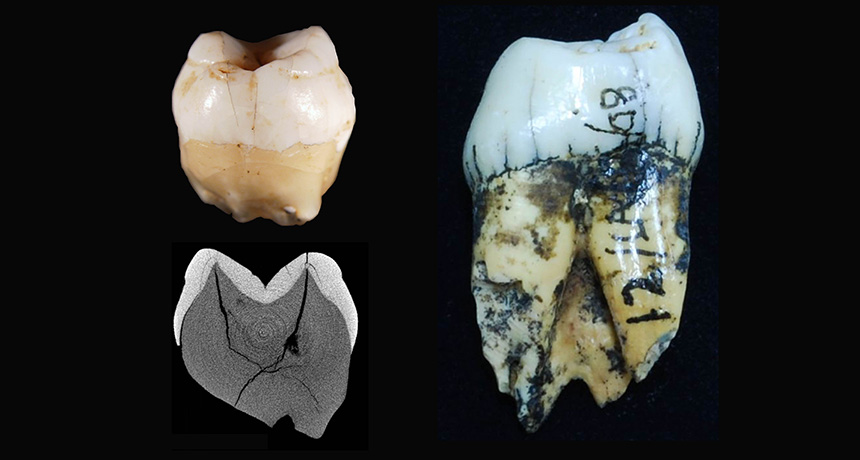Ancient people arrived in Sumatra’s rainforests more than 60,000 years ago

Humans inhabited rainforests on the Indonesian island of Sumatra between 73,000 and 63,000 years ago — shortly before a massive eruption of the island’s Mount Toba volcano covered South Asia in ash, researchers say.
Two teeth previously unearthed in Sumatra’s Lida Ajer cave and assigned to the human genus, Homo, display features typical of Homo sapiens, report geoscientist Kira Westaway of Macquarie University in Sydney and her colleagues. By dating Lida Ajer sediment and formations, the scientists came up with age estimates for the human teeth and associated fossils of various rainforest animals excavated in the late 1800s, including orangutans.
Ancient DNA studies had already suggested that humans from Africa reached Southeast Asian islands before 60,000 years ago.
Humans migrating out of Africa 100,000 years ago or more may have followed coastlines to Southeast Asia and eaten plentiful seafood along the way (SN: 5/19/12, p. 14). But the Sumatran evidence shows that some of the earliest people to depart from Africa figured out how to survive in rainforests, where detailed planning and appropriate tools are needed to gather seasonal plants and hunt scarce, fat-rich prey animals, Westaway and colleagues report online August 9 in Nature.